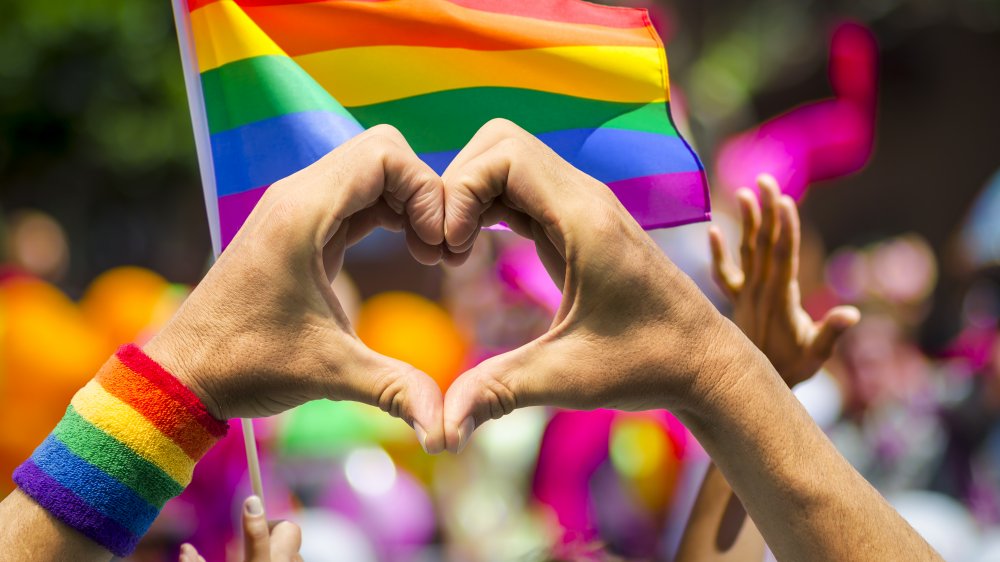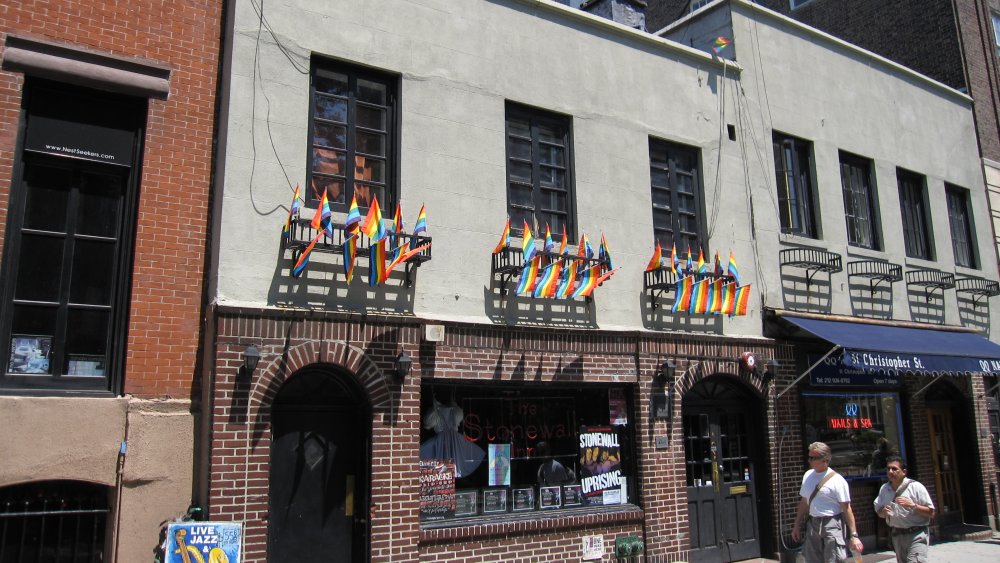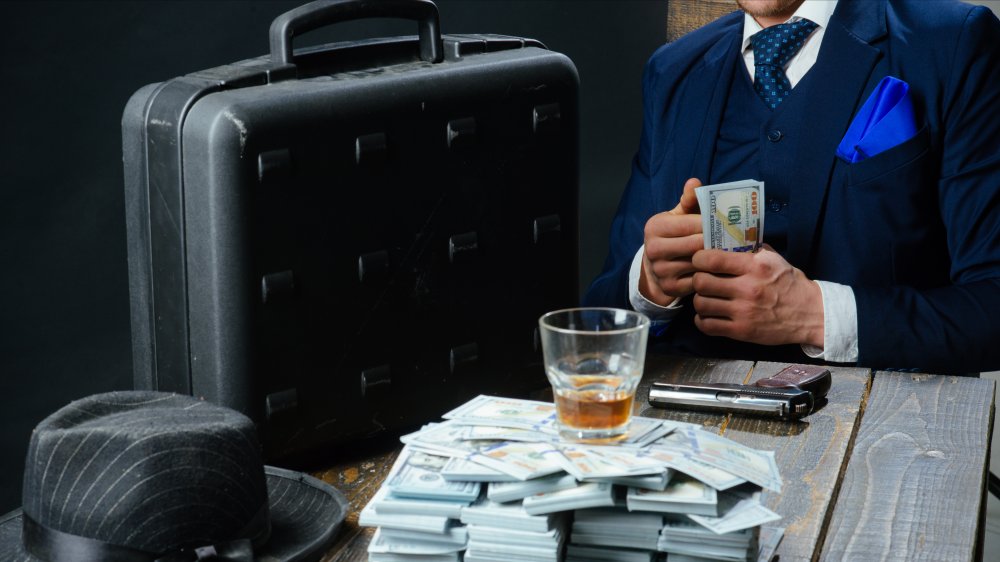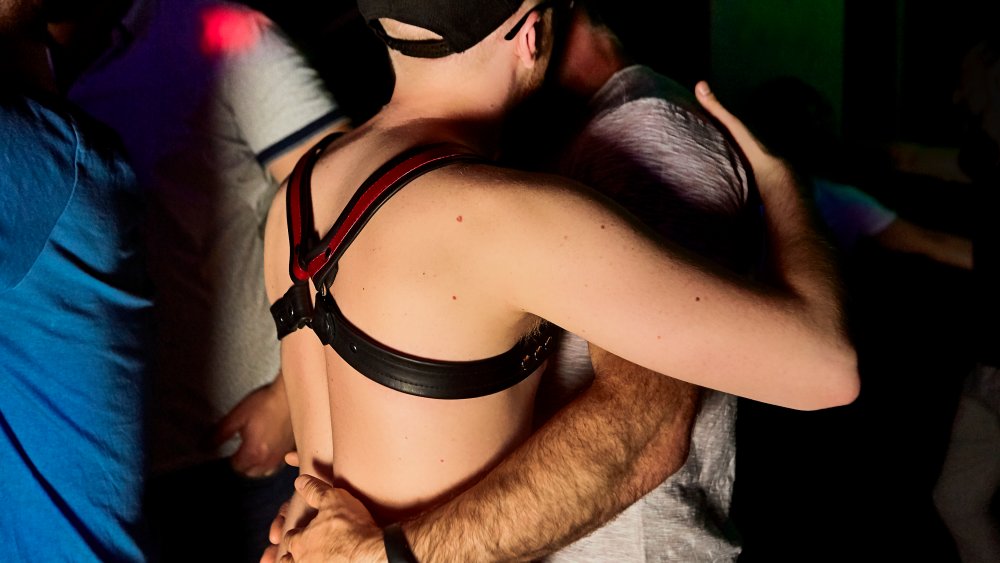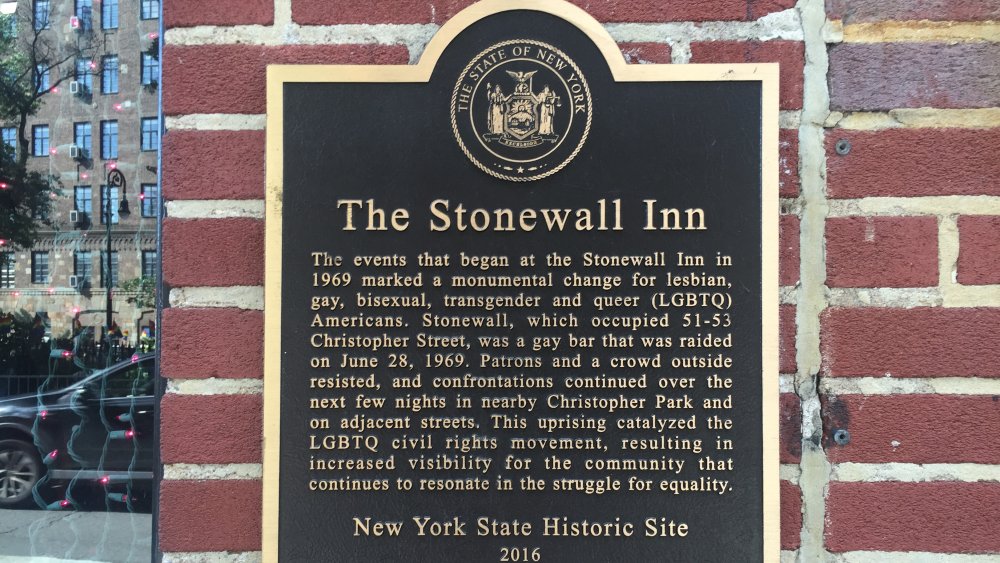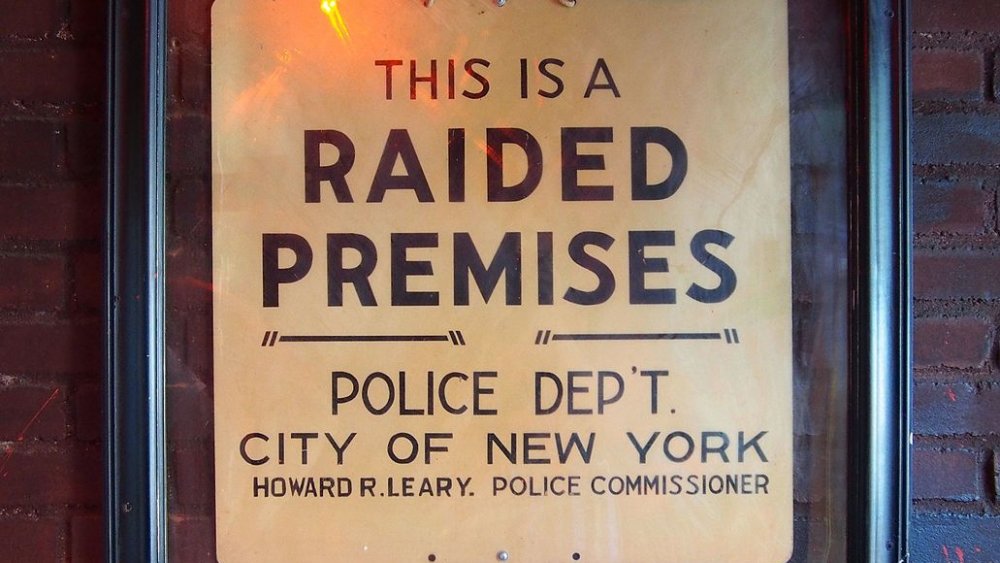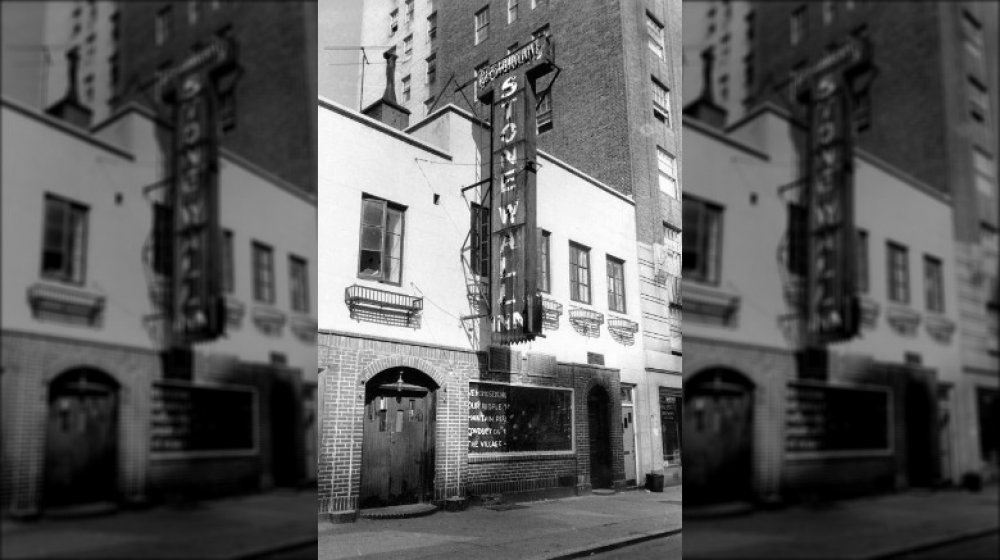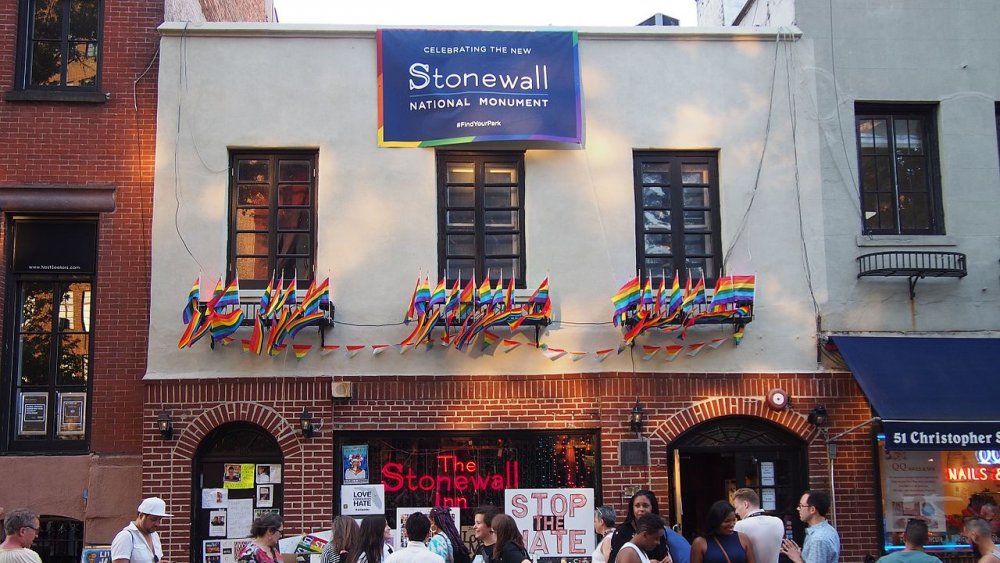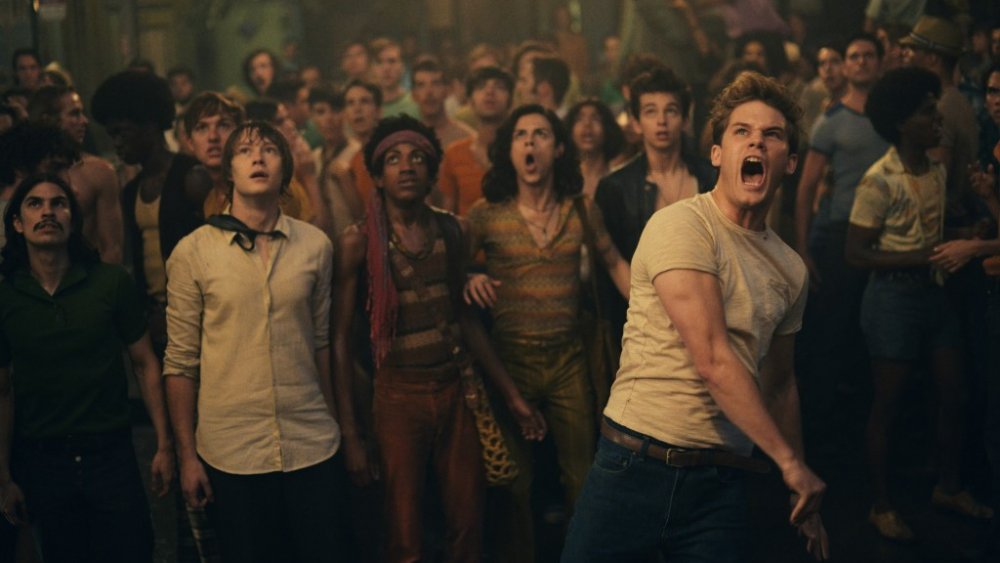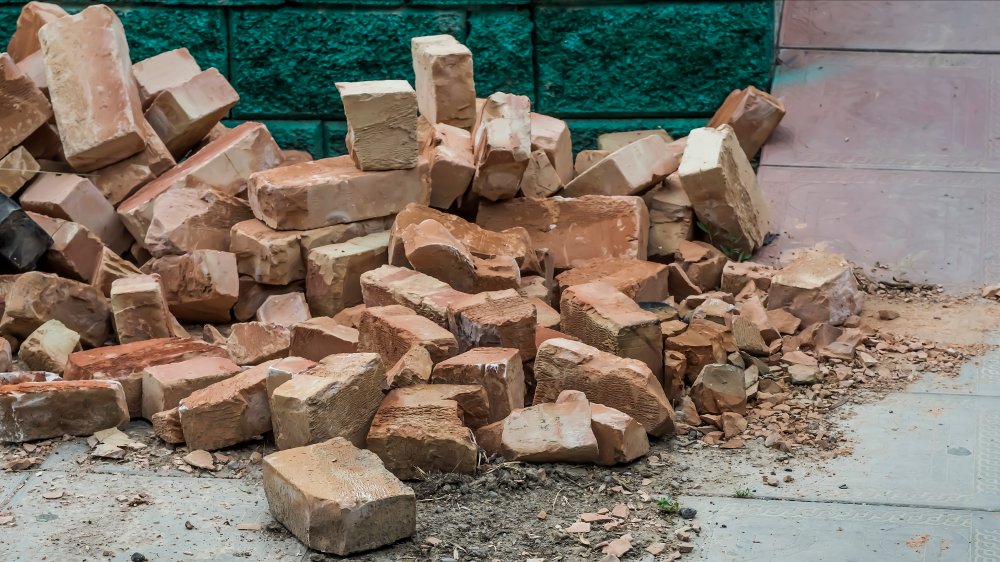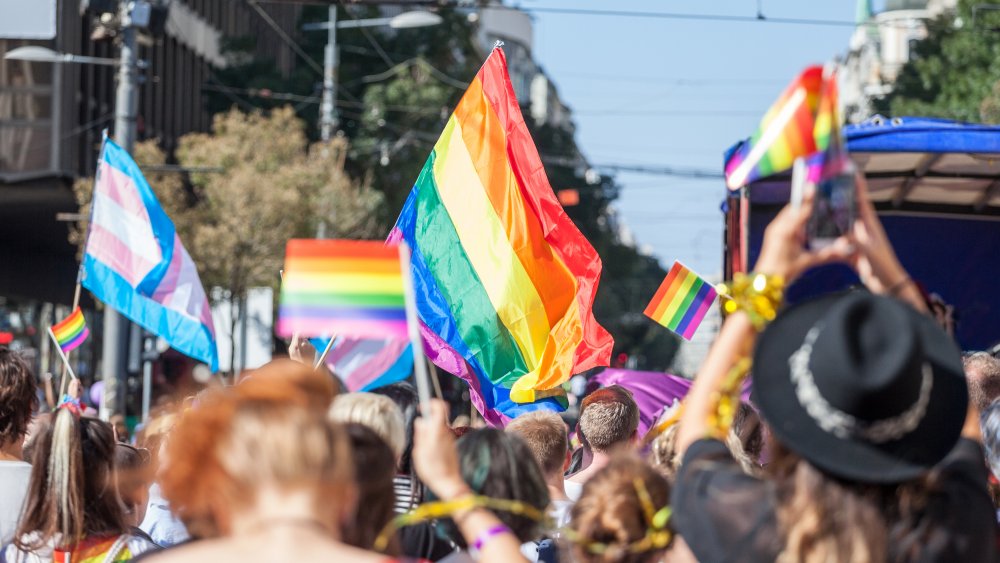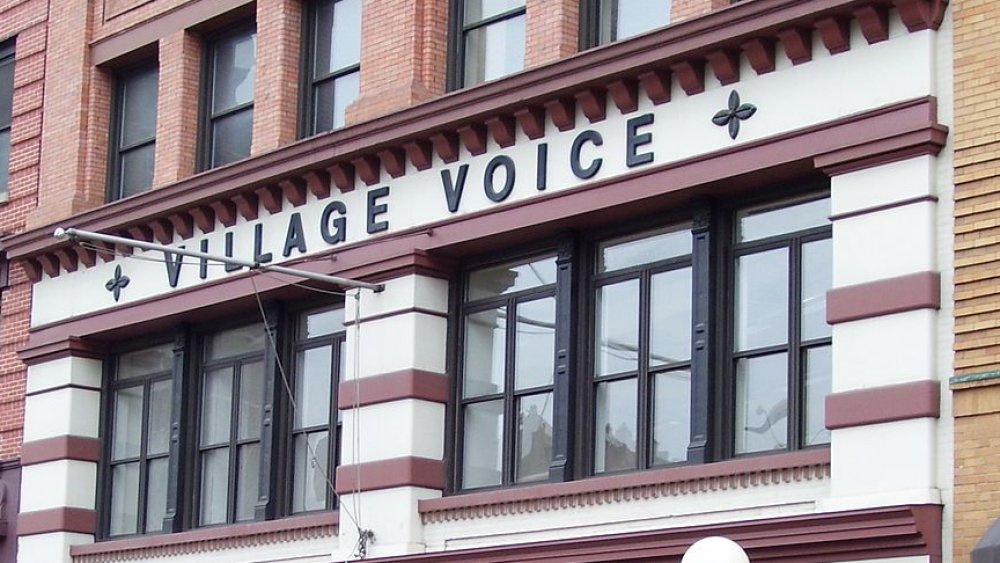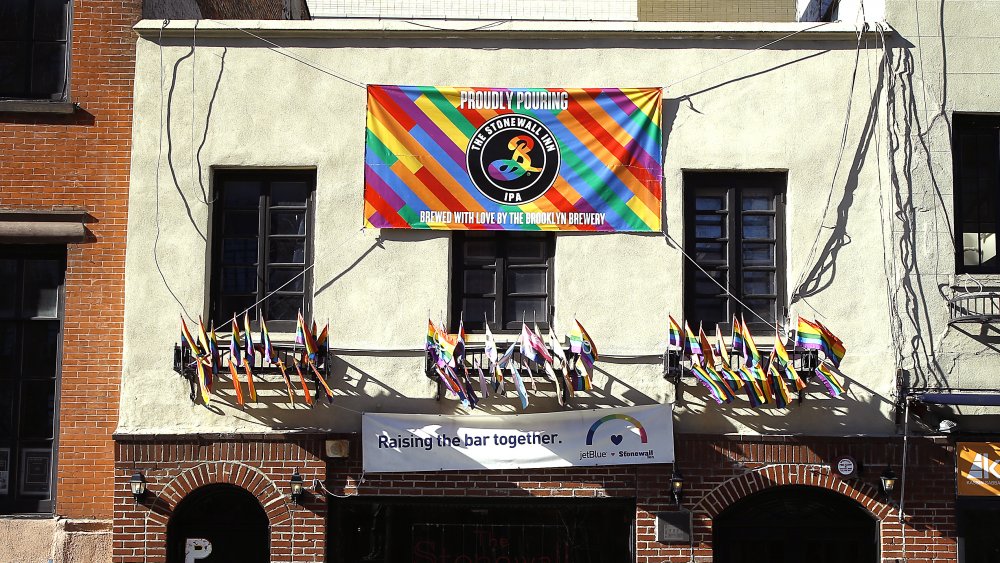The Untold Truth Of The Stonewall Riots
On June 28, 1969, a riot unfolded in New York City that would change history. After a police raid on gay bar the Stonewall Inn, patrons took up whatever they could find and fought back against their oppressors. Stones were thrown. Cars were overturned. The Stonewall itself was set on fire. And, amid all this chaos, the Gay Rights movement was born.
At the time of the riot, simply existing as a gay person was still a crime in the vast majority of states. Terrified of the law, LGBT people had never been able to properly organize. That changed in the aftermath of Stonewall. It was from this one, fateful night that modern LGBT activism sprang, that Gay Pride became a thing. Scrub the Stonewall Riots from history, and the social landscape would look very different today.
Yet how much do most of us actually know about what happened that night? How many regular schmoes could confidently say anything beyond, "There was a gay bar called the Stonewall ... and probably some riots?" Well, strap yourself in, because the truth is way weirder — and way more interesting — than you could possibly imagine.
A hunted minority
What's your mental image of the late 1960s? We're guessing it involves hippies and the phrase "free love." But what was free for a handful of straight white kids with degrees wasn't free for everyone. LGBT people, for instance, could pay a heavy price for love. In the summer of 1969, there was only a single state you could legally exist in as a gay person: Illinois. Get bored of Chicago (or, erm, whatever the heck else there is in Illinois), and you'd be breaking the law.
According to The Guardian, no other state in the Union allowed consensual acts between same-sex adults. In California and Pennsylvania, enjoying a private bit of ultra-hot dude-on-dude or lady-dude-on-lady-dude action could get you locked away in a mental asylum, and that was a relatively good outcome. Seven other states mandated legal castration.
Even in New York City — at that time likely the city with the largest LGBT population on Earth — there were draconian anti-gay laws. For example, you could be jailed for not wearing at least three "gender appropriate" items of clothing (via NY Times). And that was just the legal side. In Queens, vigilante gangs were chasing gay men out of local parks with threats of violence. In other words, it was a hard time to be gay, lesbian, bisexual, trans, or anything other than incredibly straight.
The Mob connection
Since being gay in late-1960s NYC was super-illegal, that meant the scene was intimately connected to the Mafia. The idea of a bunch of alpha male violence machines getting involved with a downtrodden minority group might seem weird on the surface, but it actually made sense. The city's LGBT people desperately needed an outlet, which meant they would pay top dollar to get into even the scuzziest gay bar. And since gay bars were illegal, the Mafia would also have an automatic monopoly. Did someone say "Kerching?"
History has the details. Right up until the end of the decade, it was illegal to even buy alcohol as a gay person. Dancing with another person of the same gender was completely off the table. That meant no legitimate business owners courted the gay community. On the other hand, the Mafia had the reach and the cash to splash bribes around and make sure their bars weren't shut down (although they couldn't stop them from being raided altogether).
The Stonewall was no exception. Run by a mobster named "Fat Tony" from the Genovese crime family, it was created less as a safe space for queer people to meet than it was a safe space for mobsters to swipe every penny out the pockets of gay people.
The Stonewall was far from the only gay bar in NYC
One oft-repeated myth of the Stonewall Riots is that the patrons flipped out because the cops tried to shut down the one gay bar in New York City. It certainly makes sense: How much more likely would people be to fight with their backs against the wall? But it's not even remotely true. As The New York Times explained in a 2019 documentary, the Stonewall Inn was just one of many illicit LGBT venues operating across the city. It wasn't even the only one in the East Village. There was another just up the street.
So what made the Stonewall so special? You can sum that up with a single phrase: dance floor. According to The Guardian, the Stonewall was the only queer bar in the city that allowed dancing. This was an era when dancing with a member of the same sex could get you arrested. Even the other Mafia-run bars didn't want to deal with that hassle. But the Stonewall could shelter up to 350 people at any one time, allowing them to dance with their boyfriend or girlfriend without fear. That's a pretty powerful draw. As Guardian interviewee and one-time Stonewall regular Tommy Lanigan-Schmidt told the paper, it gave the clientele a sense of "personhood" they'd never experienced before.
The Stonewall was utterly vile
While the Stonewall might have operated as a safe space for the city's LGBT couples, that doesn't mean any of them held it in high regard. In fact, even without its Mob connection, the Stonewall Inn was categorically vile. Imagine the worst bar you've ever been in, combined with the worst episode of Extreme Hoarders. Congratulations. You're now maybe a quarter of the way toward picturing the historic Stonewall.
Both History and The New York Times have the yucky details. Despite being a national monument today, the Stonewall Inn of 1969 was Manhattan's septic tank. The glasses were washed by being dunked in a sink full of greasy water. The toilets regularly overflowed. The drinks were watered down almost beyond being drinkable. There was no fire exit. The bouncers often rejected people based on their race, so if Fat Tony's guys judged there were too many black people that night (for example), no more would be allowed in. Then there was the extortion. As The Guardian notes, the Mob often blackmailed wealthier, closeted customers.
As a result, the Stonewall attracted a very specific type of clientele: those who loved to dance, and those who had nowhere else to go. Many of the regulars were gay street kids, or gender nonconforming, or fans of "scare drag" who simply weren't welcome elsewhere. This would have consequences down the line.
The raid on the Stonewall wasn't even the first that week
Given the violence and massive social change the June 28 Stonewall raid kicked off, you could be forgiven for assuming it was the biggest black swan event — an unexpected attack on one of the city's major LGBT spots. In reality, it was way more mundane. Vice squad raids on queer establishments were frequent enough in 1969 New York that you could practically set your watch by them. According to The Guardian, so many places had been raided that June that up to 100 people were being arrested every week. The Village had been hit five times already. Among those bars raided had been the Stonewall itself.
The New York Times explains. Just four days before the infamous June 28 raid (Tuesday), Deputy Inspector Seymour Pine had led cops into the Stonewall, arresting clients and seizing liquor. If that name sounds familiar, it's because Pine is the same guy who'd lead the following raid, the one that would make history. And that may be because of his experiences that Tuesday.
Apparently, as Pine was leaving, someone — possibly the Stonewall's Mob-connected manager known as the Skull — told him, "We'll be open again tomorrow". So it proved to be, and so a fed-up Pine decided to shut the Stonewall down once and for all.
The lead policeman had a crazy resume
When telling the story of the Stonewall Riots, most outlets have little to say about Deputy Inspector Seymour Pine. That makes sense: Why focus on the one straight character in a tale of LGBT empowerment? But it's also a shame, because Pine was far more fascinating than his reputation would suggest.
As New Jersey Jewish News described in his 2010 obituary, Pine was a guy who'd seen action. Drafted into the Army, he'd fought all over Europe in World War II before getting injured when a landmine exploded nearby. But although he'd be left with back problems for the rest of his life, Pine still found time to write the military's official manual on hand-to-hand combat. Far from being just another heavy-handed city cop, he was a veteran with the skills and wounds to show for it.
He was also someone who'd had to face prejudice himself. In the police department, he was subject to what he later called "Jew name-calling" (although he also said his Jewishness had never held back his career). It's also arguable whether he himself was particularly homophobic, beyond the regular prejudices of the time. At a 2004 event, amNewYork reported that Pine said he'd targeted the Stonewall because he wanted to smash the Mafia, not target NYC's queer community. When challenged by an audience member to apologize for his role in the raid, he freely did.
The Stonewall raid was spectacularly ill-timed
It's tempting to assume that the Stonewall Riots were inevitable, the only possible outcome to anti-gay policies in the 1960s. But the raid four nights earlier shows that's not the case. Nah, for Stonewall to erupt the way it did would require several factors coming together. One of the biggest of those factors was timing. Per The Guardian, Inspector Pine chose to hit the bar late on a Friday night (or very early on a Saturday morning, if you want to be pedantic), something the vice squad rarely did. As Pine would soon find out, there was a good reason for that.
Police raids on gay bars mostly took place on weekday afternoons, when there were few customers. Partly, this was due to the insane bribes the Mafia were paying the police – History estimates Fat Tony was paying the 6th Precinct alone some $1,200 a week. But partly, this was to do with practicalities. When you're eight cops walking into a semi-empty place at 6:00 PM on Tuesday, it's a very different feeling from walking into one rammed with up to 400 drunk people on a Friday night.
But Pine wanted to aim for maximum impact this time, disrupting business when it was at its liveliest. Perhaps naively, he assumed the LGBT customers would be as docile as during the weekdays. Historical spoiler alert: They weren't.
Who started the Stonewall riot?
Pine and his men moved into the Stonewall at 1:20 AM on Saturday, June 28. The lights in the Stonewall went on, the music went off, and the cops started searching for Mob-connected employees and anyone violating the city's "three items of gender-appropriate clothing" law. As usual, the majority of the crowd were given a warning and then sent on their way. But then things started to get unusual. Rather than disperse, some 150 drunk members of the Stonewall clientele — mostly street kids — started gathering in Christopher Park across the road. Before long, things turned ugly.
As The Guardian describes, it started with the drunk crowd taunting the cops. But the real trigger came when a lesbian was arrested and led out into the street. She fought the cops like crazy. At one point, they put her in the back of a cop car, and she managed to kick her way out. Repeatedly. Each time, the crowd was riled up more and more. Finally, according to History, the woman shouted to the crowd to help her. The crowd obliged.
Interestingly, we have no idea who this woman was. While some have claimed it was Stormé DeLarverie, she's never been positively identified. Imagine how weird it'd be if we only knew Rosa Parks today as "an unidentified woman of color." That's what this mystery woman is to the Gay Rights movement.
Did the "first brick" even exist?
It's probably the biggest question still hanging over the Stonewall Riots. Who threw the first brick, thereby turning a fight with police into a full-on riot? While the question is more famous today as a snarky meme, it's still assumed that someone threw that brick. But that assumption may be wrong. In 2019, video journalist Shane O'Neill released a short documentary tracking his efforts to find out who really threw the first brick. The answer? Probably no one.
Over the years, the "first brick" has been attributed to many people. The two most common names are Sylvia Rivera and Marsha P. Johnson, a pair of trans women of color who were present at the Stonewall Riots. But both are on the record saying they didn't throw anything first. On top of that, there's no hard evidence that any bricks were thrown. Coins? Sure. Empty beer cans? Check. Broken glass? Yep. But bricks? The best historians can manage is "err ... maybe?"
Arguing the existence of the first brick is controversial today, because it's one of the few instances when trans women and people of color are at the forefront of the early Gay Rights narrative. Yet it needn't be this way. Rivera and Johnson both had long, distinguished activist careers after Stonewall (via New York Times). Whether or not they literally "threw the first brick," their contribution to LGBT rights is undeniable.
The Stonewall riot was both dangerous and hilarious
First brick or not, the scene outside the Stonewall quickly escalated into a riot. But just saying "there was a riot" and then jumping ahead to the aftermath skips over just how intense things got that hot June night. The riot was both more glorious and more terrifying than you can probably imagine.
First, the hilarious: The rioters being a bunch of young, drunk, defiantly out people, the carnage quickly turned camp. The high point came when some of the scare drag street kids started a Rockettes-style kickline in front of the cops, singing, "We are the Village Girls, we wear our hair in curls!" (via The Guardian), as well as other lyrics way too X-rated to print. But while many participants would later stress how fun the uprising was, it was also scary. As the rioters overwhelmed the cops, Pine and his men were forced to retreat inside the Stonewall. It was at this point that the rioters tried to burn them alive.
The Village Voice had a reporter in the bar. Trapped inside, Pine and his men watched as lighter fluid was poured in and set ablaze. Then the rioters started using a parking meter as a battering ram to break down the door. Per the Times, it was only a stern warning from Pine that stopped the cops from shooting their way out. Had Pine gotten jittery, it's likely we'd now be discussing the Stonewall Massacre.
The media reaction was appalling
In the end, the first night of rioting ended when backup came to free Pine and his men from the besieged bar. But dawn on Saturday morning wasn't the end of the chaos. The media reaction would be enough to set Christopher Street ablaze all over again.
As The Conversation reports, New York's mainstream media responded to the birth of the Gay Rights movement by doing one of two things: They either ignored the story, or just regurgitated the police line that it was the work of hooligans. Actually, that's not quite true. They also belittled the rioters. As Time recalls, the oft-repeated myth that Judy Garland's funeral that Friday "caused" the riots actually comes from a right-wing newspaper story that suggested it to ridicule the rioters. But if the mainstream media fared badly in the aftermath of Stonewall, some of the alternative outlets may have fared even worse.
Despite being famously left-wing, The Village Voice didn't have much to say about the rioters beyond breathtaking stereotypes. Actual quotes included referring to them as "the forces of f*ggotry," and declaring "wrists were limp, hair was primped." When the Village's LGBT community read this on Wednesday, July 2, they were understandably angry, so much so that there was another riot. The offices of The Village Voice were marched on. It was the last major riot related to the Stonewall raid, but the aftereffects would be felt for decades.
The LGBT community campaigned to have the Stonewall shut down
In October 1969, a mere four months after the riots it lent its name to, the Stonewall Inn was closed for good. (The version you can see today was reopened under new management in the 1990s.) Given that it was a place for the Mob to turn a quick buck, such an outcome might not be all that surprising. What might be surprising is who campaigned to have the Stonewall shut down in the first place. According to New York history podcasters the Bowery Boys, it was the city's LGBT community who wanted it gone.
The aftermath of the Stonewall Riots led to a new era of activism in the LGBT community. While most of this activism focused on visibility and overturning laws targeting queer people, a good chunk of it also focused on getting the Mafia the heck out of gay spaces. According to History, signs sprang up around the Stonewall just after the riot, saying things like "Gay Prohibition Corupt$ Cop$ Feed$ Mafia." Meanwhile, two new LGBT activist groups, Gay Activists Alliance and Gay Liberation Front, began working to get Mob-connected gay clubs shut down.
They succeeded. The Stonewall was gone before 1969 was out. It would be a full quarter of a century before the bar was reopened under non-Mafia management. By that time, attitudes had so changed that the bar would eventually wind up being declared a national monument.
